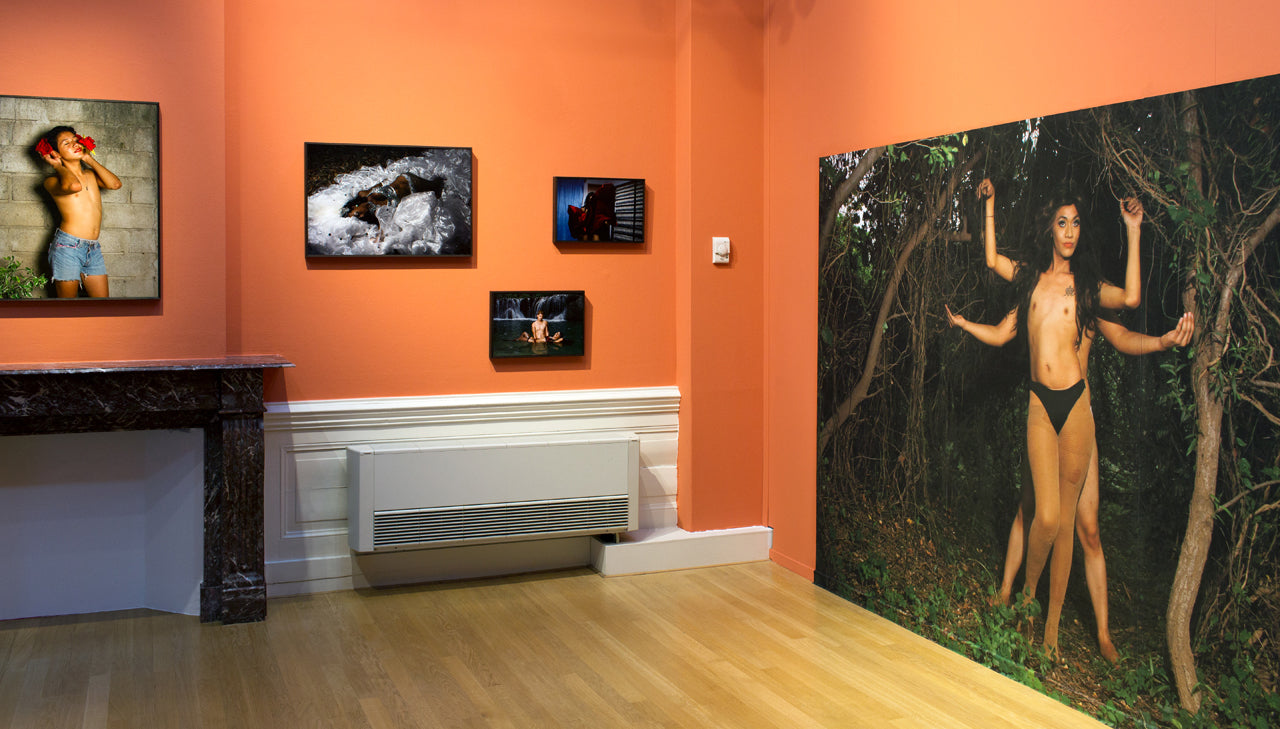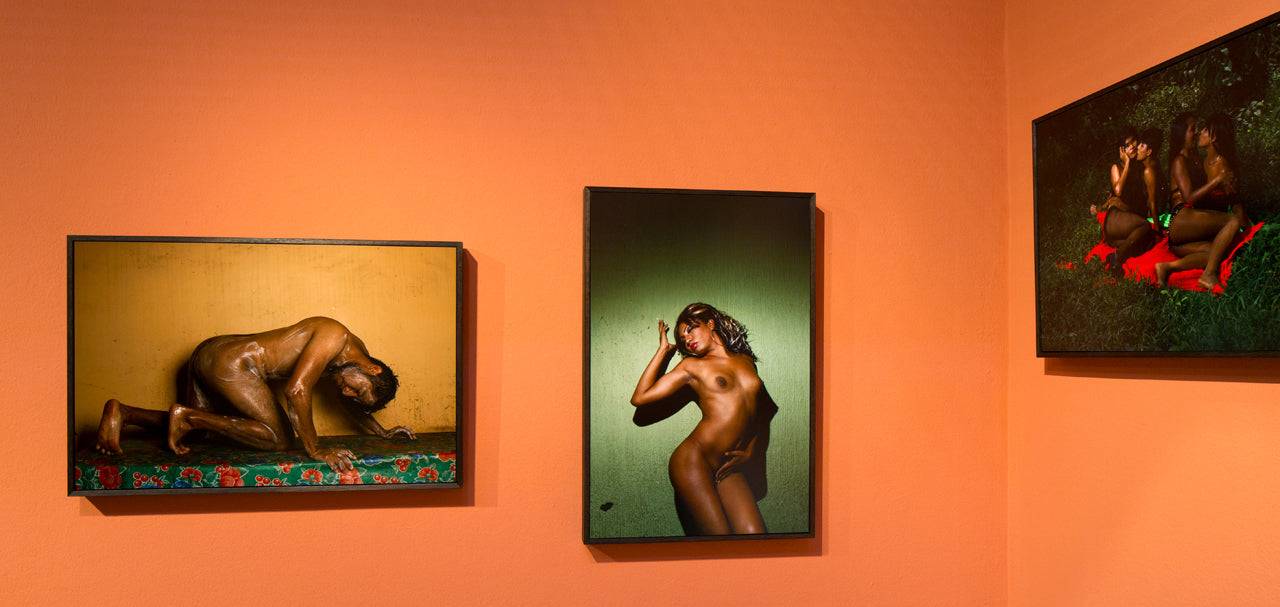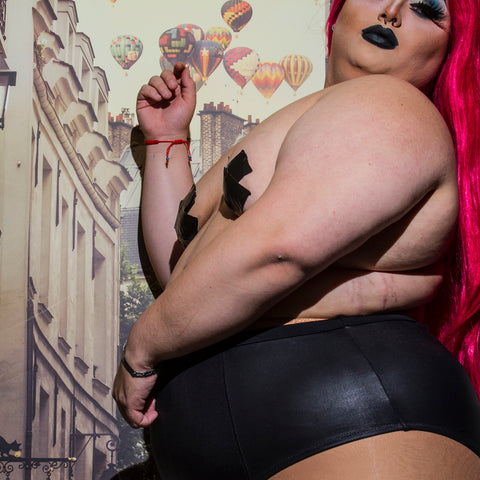FOAM X HYDRANelson Morales and Diego Moreno
12/02/2020 - 12/03/2020
ANA CASAS BRODACURADURIA
Foam welcomes Hydra, a young photographic platform based in Mexico City, for a collaborative presentation of young talents from Mexico at Foam 3h.
From workshops on book-making to the organisation of exhibitions, Hydra organises a range of photography-related activities, establishing a vibrant network of contemporary photographers in the process. Foam and Hydra present the work of two young talents in Mexican photography: Nelson Morales (1982) and Diego Moreno (1992). Mexico's complex history has created an equally complex society. Over time, it has absorbed many different cultures and traditions, combined strong Catholic values with beliefs from other religions, and blended influences from foreign cultures with pre-Hispanic indigenous customs. Through photography, both artists visualise and question notions of identity through personal and cultural explorations of their own local environment.
Foam X Hydra is the first of three collaborations in 2017, involving photography platforms in Mexico City (Mexico), Lagos (Nigeria) and Yogyakarta (Indonesia), each operating in a specific local art scene.
The initiative offers Foam the opportunity to present young talents from different cultural backgrounds and to investigate developments in local photography discourses around the world.

Mexico has recently undergone profound social, political and ideological transformations. Generations exposed to images in everyday life, in the press, in the media, which reshape the collective imagination in surprising and even unpredictable ways.
We are witnessing a more vibrant photographic discourse than ever before. Contemporary Mexican photography presents a vast panorama, extraordinarily rich in terms of quality and subject matter, created by photographers from practically all over the country. Every year, new young photographers emerge with interesting and unique projects.
Mexican society has been historically complex, composed of different cultures and traditions, with roots in a powerful pre-Hispanic stream and a large number of ethnic groups that existed before the arrival of the Spanish.
In the vast expanse of Mexican territory we find Catholic beliefs, other religions, enduring pre-Hispanic habits and customs, and influences from other cultures that have mixed with the indigenous population throughout history. The double game of conquered and conqueror, subject and ruler, marginalisation and resistance has been constant since the Spanish conquest.
The pride of Mexico's indigenous peoples and their deep-rooted sense of belonging to a largely class-based country where mestizos hold power is also associated with the issue of technology as an instrument of domination.
The social democratisation arising from the rise of the internet, social networks and mobile devices has gradually invaded everyday life. Taking a picture with a mobile phone, sharing it online, sending text messages, chatting: all this has become part of life in even the most isolated communities.
From the Seri villages in northern Sonora to the Lacandon jungle in the south, young people across Mexico are using mobile phones and Facebook, taking selfies and exchanging images, sharing their lives in real time with people in other places.
This awakening of contemporary uses of photography has allowed individuals in remote communities in Mexico to appropriate the medium and articulate a discourse about their own reality. In the same sense, access to the work of both established and amateur photographers from around the world has permeated the ways in which Mexican photographers view and produce their work: contemporary influences are a constant ebb and flow. Previously, only those who could visit museums and libraries in other countries had access to such information. Among the younger generations, the aesthetics of international photographers are now organically amalgamated into the images of Mexicans, integrated into their ways of seeing, blended, assimilated and reinterpreted in their discourses.

GUARDIANS OF MEMORY
Diego Moreno is a young photographer from San Cristóbal de las Casas, Chiapas, who has developed a powerful body of work that reflects on identity, individual and collective. He delves into his culture and his family, and creates series that move between scenic and documentary photography, creating a unique and strong body of work.
His Guardians of Memory series originated with the panzudos mercedarios, the sturdy guardians of the barrio de la Merced in San Cristóbal de Las Casas in Chiapas. The panzudos represent sinners: the more sins a person has to atone for, the bigger and uglier their attire, the better to cure their sins. These figures announce the feast of Our Lady of Mercy and accompany her, purifying themselves in the process. The annunciation is made as the figure of the Virgin Mary passes by, carried on the shoulders of her bearers, with an entourage of Aztecs, Catholics and Moors on horseback, dressed as Arabs and with their faces painted, representing the Muslims who invaded and occupied Spain between 702 and 1492.
Diego Moreno integrates this ancestral imagery with the exploration of his family history, transforming it into a space inhabited by figures connected by nightmares and fears, as symbols of the photographer's reflection on his personal and cultural origins. Moreno explores the representational tunnels of the domestic space as a place plagued by ghosts that evoke the haunting history of his family, fusing it with pre-Hispanic traditions and the apocalyptic visions of the Catholic religion. His work gives new meaning to the intricate tangle of the occult and the visible, the individual and the collective subconscious, in the highly complex map of coexisting cultures and beliefs in contemporary Mexico.
In Mexico we also find a large number of photographers who work with their own bodies, their sexuality and related themes. From different perspectives, they explore and radically question notions of identity, the body, physical beauty, homosexuality and family ties. Transgressive visions that expose the viewer's gaze and betray the complexity of their own prejudices and fears. Bold visions that convey a powerful pulse of inner energy that rises to the surface, exposing veins and tissues that shape desire and life and reconfigure identities.
Nelson Morales (b. 1982) comes from a traditional family in a small village on the Isthmus of Tehuantepec in Oaxaca. His work focuses on the Muxhes of his community: an ancient and socially accepted tradition of men taking on female roles in society. Zapotec culture in Oaxaca accepts homosexuality, giving it an active role and greater acceptance in society than anywhere else in Latin America. The Muxhes are organically integrated into the social and economic fabric of the community. They are said to be a "blessing", as they often form the basis of the family economy, working as hairdressers, embroiderers, waiters in the cantinas or vendors in the market. They are also left to care for elderly parents when other children have left home and married. In a largely macho Mexico, and at a time when transgender issues are at the forefront of reflection and debate, the explorations of artists such as Nelson Morales take on a particularly important value, generating a greater understanding of duality as a deeply ingrained Mexican characteristic.


MUXES
Nelson Morales has spent many years working on this series; it has evolved and changed with the author himself. Seduced by the contradictory attraction and conflict that the Muxhes awaken in him, Morales began a long journey exploring his own identity that has transformed his way of photographing, his reflection on representation and his own role in the body of work. Morales approaches the ongoing project as part of a personal search for identity, intertwining the feminised images of the Muxhes with aspects of his own sexuality.
Gradually he began to be part of the images and now accepts himself as a Muxhe. Morales decided to use photography as a performance to create and recreate his hidden relationship with muxhe sensuality, with the aim of discovering his own sensuality. The images are provocative, erotic, kitsch, and always challenge the viewer - this provocative element is at the core of the sexual and social role of the Muxhes themselves. There is a constant tension between our notions of beauty and politically correct ways of dealing with sexuality. The images confront us with extreme ways of representing femininity, sexuality, beauty and gender and challenge our own notions and prejudices. Morales' vision addresses the cultural mix between pre-Hispanic ways of dealing with identity and sexuality, the aesthetics of Zapotec culture merging with pop and contemporary images from Mexican films and soap operas, not only in the eye of the photographer but in the eye of the Muxhes themselves. With this growing body of work, Morales raises questions about homosexuality, transvestites, the Muxhe and Zapotec identity in a globalised world.
Photography in Mexico: a changing country, intersecting with a medium that is adapting and transforming at breakneck speed. In recent years, both the production and circulation of photography have grown exponentially in Mexico.
Nelson Morales and Diego Moreno are part of a new generation of photographers who reflect on this complex and fertile panorama, which has detonated new and daring ways of constructing photographic discourse. Breaking with the tradition of documenting "otherness" from the usual point of view in Mexican photography, their work explores their own environment, history, traditions and personal themes with a way of using the medium that integrates contemporary photographic discourse in a very organic way.


DIEGO MORENO
San Cristóbal de las Casas, Chiapas, Mexico. In 2012 he formally began studying photography at the Gimnasio de arte Chiapas. In 2014 he studied the Diploma in Photonarrative and new media with a scholarship from the World Press Photo Association. Graduated from Seminario de fotografía Contemporánea 2015 from Centro de la Imagen and the Centro De las Artes de San Agustín, Etla, Oaxaca. He has received several awards around the world such as: The Iberoamerican Photography Award POY LATAM 2019; The International Image Award FINI 2019; The Young Talent Award of the Fifth African Biennial of Photography in Ethiopia; The LensCulture Emerging Talent Award 2018 and the X Biennial Puebla de los Angeles in Mexico, 2015.
NELSON MORALES
Unión Hidalgo, Oaxaca, Mexico, 1982. She studied photography at Fotoensayo and PFC: program de Fotografía Contemporánea (2013), as well as taking a workshop with French photographer Antoine D'Agata. In 2013 he held a solo exhibition of his series Sueños in Mexico City and has participated in numerous group shows. He was the winner of a photography competition organised by Canal 11 (Instituto Politécnico Nacional). His work is part of the collection of the Fundación Televisa, the private collection of Allen Blevins, director of the Bank of America Merill Lynch collection, among other public and private collections.
WORK BY DIEGO MORENO AND NELSON MORALES
Get to know the work we have for sale for you by these authors.

